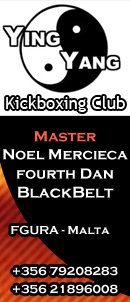Posts Tagged ‘Boxer’
The Great Little Champion From Logan Square
Johnny Coulon
The Great Little Champion From Logan Square
By Enrique Encinosa
I met Johnny Coulon in early 1965. I was fifteen and Coulon was seventy-six. At first glance he did not impress. The Johnny Coulon that shook my hand that cold day in Chicago, was a milk-white little man who wore a white shirt, dark pants and a bowtie. He had eyes like berries on a bush and his voice was soft and friendly.
I was a young kid in love with boxing and Johnny Coulon fit me like an old shoe. The little guy was not only a topnotch trainer, but living boxing history. He had known every heavyweight champion since the Great John L. Sullivan, had been bantamweight champion of the world, had trained hundreds of fighters and was a revered celebrity in Chicago during the sixties. At seventy-six he could leave a ring by jumping over a top rope, landing softly on his feet. He celebrated a birthday by walking the length of the gym on his hands.
He was born in Canada in 1889, but grew up in turn of the century Chicago, where as a prelim fighter he became known as “The Cherry Picker from Logan Square.” He turned pro at sixteen and was champion at twenty-one. His career, managed by his father, Pop Coulon, stretched from 1905 to 1920. The hall-of-famer is listed as losing only four times in ninety-seven fights, but he claimed to have fought over three hundred pro fights.
“A lot of my fights never made the record books,” he told me, as I began pumping him for information on boxing lore, “I fought in small shows all over Illinois and Indiana. I fought in Terre Haute four or five times and not one of those fights made the record books. I also fought in Gary, South Bend, Streator and other places, like county fairs. Not even half of my fights are listed. There was a tavern near Logan Square that had a ballroom in the back and they used to run weekly shows. I think they charged twenty cents at the door and the place held maybe three hundred. My average purse for those fights was four dollars, but back then you could live on ten dollars a month. I fought at least twenty times in that ballroom, in 1905 and 1906, and not one of those fights ever made the books. During those two years I also toured eight weeks with a circus, fighting all comers for four rounds. I was paid eight dollars a fight. I had maybe twenty five fights in those eight weeks. Not one made the record books. ”
Johnny Coulon fought all the top little men of his time. He traded leather with Pete Herman, Jim Kendrick, Frankie Burns, Kid Williams, Frankie Conley, Harry Forbes and Kid Murphy. A good fighter he beat was Charlie Goldman, a tough bantam who went on to become Rocky Marciano’s trainer. Coulon won the crown from Jim Kendrick in nineteen rounds . A fighting champion, the record books tell that in 1912 Johnny Coulon beat two top contenders, Frankie Conley and Frankie Burns, in two twenty rounders that both went the distance. The Cherry Picker packed forty rounds of fighting in fifteen days.
“There were a lot of tough fighters in my time,” he once told me, “when I fought Kendrick I was sick, weak with a stomach ailment. When Conley fought me, he sprained his wrist real bad, but kept fighting even though he grunted in pain every time he hit me. Conley was tough but he was made to order for my style. I would jab him to the body, jab him to the head and use the jab to set up the right hand. And Conley was a sucker for the right hand. I was not a great puncher, but I would time him coming in and shoot the right hand down the middle and I would score every time.”
The gym was located at 1154 E. 63rd Street, on the South Side of Chicago. The L Train rumbled past the third floor windows. There was a single ring, a half dozen bags of different types, a locker room and clean showers. Johnny and his wife, Marie, ran a clean pugilistic emporium. Mrs.Coulon did not allow cursing or smoking . Visitors were allowed as long as they behaved themselves in a proper manner. Sonny Liston was expelled on his first day at the gym, then apologized and became a very good friend of Johnny and Marie.
The gym, which opened during the twenties, had been host to boxing legends. Dempsey, Louis and Marciano had sparred within these walls. Ali would often used the gym to keep himself toned during his exile years. I found myself sparring in a ring where Sugar Ray Robinson had once trod.
At the time I embarked on a modest amateur career, the well known fighters at Coulon’s included former junior welterweight champion Eddie Perkins (74-20-4) who was managed by Coulon, and Light-heavyweight contender Allen Thomas. Perkins, a steelworker, was a clever little boxer with a good chin. Thomas was a southpaw who fought Mauro Mina, Bob Foster and several other topnotchers. Other pro leather slingers included Ben Black, who lost to Cleveland Williams, and Fred Askew, who was one of George Foreman’s early victims.
At one end of the gym, in the southern side of the room, where long windows faced the elevated tracks of the L Train, Johnny Coulon had his personal office. In Christmas, holiday postcards framed the doorway. Among the cards there were best wishes from European royalty, senators, movie producers, actors and writers. Coulon knew everyone. Ernest Hemingway had visited Coulon’s and insisted on sparring with the local pugs. LeRoy Neiman had sketched boxers working out. A cult movie of the sixties, “Medium Cool,” filmed scenes at the gym, where Coulon briefly appeared, a tiny old man captured forever on celluloid.
Johnny Coulon was a special man not only for his fame as a former champion and first rate trainer. In a brutal trade he was a man of ethics. When a local community center was about to close up for lack of funds, the one man who stood to benefit from such a closure was Johnny Coulon. He knew that a dozen fighters, seeking a new gym would increase his monthly revenue of dues. Instead of ignoring the situation and waiting for new clients, Johnny Coulon sat in his office for hours, calling members of the chamber of commerce, aldermen, reporters. Within hours, Johnny had politicians and blue blood socialites donating money to the center. Coulon even wrote a personal check and helped promote an amateur boxing show and a benefit dinner to raise funds for the competition. The community center stayed open. Such a gesture was not unusual for the Cherry Picker. The night he won the crown from Kendrick, Johnny donated a thousand dollars, a large sum of money in those days of nickel beer, to the Working Boys Home of Chicago.
When Johnny Coulon opened his gym, in the early twenties, the neighborhood had been blue collar Irish and Polish. By the time I joined the gym, the area was pure black ghetto. The four or five of us from other ethnic backgrounds commuted from the suburbs, a concept that never thrilled our parents. To Coulon, ethnic or racial background did not matter. He treated everyone the same, with a Victorian courtesy dating back to the turn of the century. As a result, when the Chicago race riots of the sixties burned down and looted whole city blocks of the South Side, Coulon’s gym was neither burned nor ransacked, a true symbol of respect. Johnny was not only “color blind,” he could boast of having been a close friend of Jack Johnson., had frequented Johnson’s inter-racial restaurant the “Café De Champion,” and had even been a pallbearer at the great champion’s funeral.
“Johnson,” he once told me, “was a very smart man. The papers said some horrible things about him, and he was very hurt by the whole situation, although he put on this public display of not caring., but he did. His first wife was pretty and a real nice lady. She killed herself. The second wife was a working girl from a bordello. I liked him but I did not approve of his lifestyle. He smoked cigars and drank wine and champagne. An athlete should not do those things.”
“His restaurant, “Coulon described, “was known as the “Café Du Champion, ” and it was located on thirty-first street. It was not open for long, because Johnson had all the legal problems and his first wife, Etta, killed herself on an upstairs apartment. The Café was impressive. It had several rooms, expensive gold plated cuspidors, burgundy wallpaper and green silk curtains. The food was very good, mostly steak and chicken dishes served on good china. He had entertainment, from local talent and early jazz bands to violin players. The Cafe was like Johnson, gaudy and fun. You know, back in those days almost everyone dressed in dark suits, but Johnson would have tailors make him suits in bright colors, like mustard or mint green. They were expensive suits and they looked sharp on him. He was a dandy, but I felt sorry for him. He had demons.”
Coulon was also known for a trick he performed for celebrities. Tacked on the gym walls were several portraits of heavyweights like Primo Carnera and Sonny Liston attempting to lift the 110 pound former champion. It was a clever trick, for as a giant would attempt to lift him, little Johnny would place a hand on the man’s neck and press gently. Whatever nerve he touched was enough to incapacitate the lifter. Men twice Johnny’s size attempted to lift him, but always failed. Although I asked him where he had learned this unusual skill, he never said, but did tell me that he had toured with a vaudeville group, where he made a profitable living giving boxing exhibitions and daring members of the audience to lift him on the stage.
Nothing good lasts forever. The little Cherry Picker from Logan Square died on October 29, 1973. I was just married and living on the East Coast, so I missed the funeral. An old pug told me that Johnny was buried with honors, at a funeral attended by writers, senators, society people and a lot of men with broken noses and mashed up ears. The pallbearers did not strain much lifting the coffin with the remains of the little champion, but as the box disappeared into the snow, tears ran down scarred faces.
Boxers of Yesteryear: Johnny Coulon
Although, Johnny Coulon is by and large forgotten by the younger generation of boxers and fans of the sport, in his time he was a living legend, with a professional career spanning 15 years (1905 – 1920). Coulon was diminutive in size but possessed intelligence, speed and fast hands; in 97 recorded bouts, he is listed as losing only four times (although he claimed as having had as many as 300 bouts). During his career Johnny Coulon won the Bantamweight Championship of the World, the 115 Pound Championship of the World and the Paperweight Championship of the World.
Johnny Frederic Coulon was born in Toronto to American parents Emile Eugene Coulon (1857–1911) and Sarah Loretta Waltzinger (1857–1923), on the 2nd of February 1989,His parents moved to Chicago a couple of years after Johnny was born, and he grew up in turn-of-the-century Chicago, where, as a prelim fighter, he became known as “The Cherry Picker from Logan Square.” (Also to be known as “The Chicago Spider”) He turned pro at 16 and was champion at 21. His career was managed by his father, Eugene “Pop” Coulon.
Johnny Coulon’s pro debut. From Chicago Tribune 08/26/1906: “Johnny Coulon, the clever amateur bantamweight, will make his apperance as a professional against Danny Goodman.” Also, fromAppleton Post-Crescent, 02/25/1920, “Coulon started at the age of 14. He was an amateur for some time…Johnny showed up at an amateur tourney in Kid Howard’s gymnasium. The Kid looked at the scales when Johnny stepped on and told him he’d better vamoose. But Johnny stuck through derisive laughter, and his dad wanted to bet $100 he could whip any of the other lads. They selected Danny Goodman, who weighed around 110, and Johnny won. Later Goodman was matched with Coulon in Johnny’s first professional fight. Again he beat Goodman. Johnny weighed 98 and Goodman weighed 113.”
Coulon won his first 26 bouts before losing a 10-round decision to Kid Murphy. In a rematch with Murphy in 1908, Coulon reversed the decision and earned recognition as the American bantamweight champion.
After capturing the world title against Kendrick in 19 rounds, he would go on to defend his title against such boxers as Earl Denning, Frankie Conley, Frankie Burns, and Kid Williams.
On the 11th April, 1910, Johnny Coulon defended his world 115 pound paper weight title, with a newspaper draw against Young O’Leary at the Marathon Athletic Club in New York. As with all title bouts in non-decision jurisdictions, the title could only have changed hands if the bout ended via knockout or foul.
It was a surprisingly tough evening for Coulon. Along with having his left eye completely closed by the persistent left jab of the impressive local fighter, he was staggered twice during a “whirlwind” tenth round - first with a right/left combination to the jaw and then with a right just before the bell.
The New York Times write-up giving the local fighter the edge in rounds 2, 6 and 10, with Coulon winning rounds 1, 3 and 9, with the remaining sessions even.
It was one of the fastest exhibitions seen in New York for some time, and the crowded house frequently voiced its hearty approval at the way things were going. O’Leary surprised even his best friends by his good showing, where as Coulon was something of a disappointment for a champion. – New York Times
Coulon is also remembered for another noteworthy feat that of winning two 20-round title matches within a span of 15 days. He defeated Frankie Conley on February 3, 1912, in Vernon, California, and Frankie Burns on February 18 in New Orleans, Louisiana.
He finally lost the World Bantamweight Title, on the 9th of June,1914 - when Coulon went down for a count of eight in the second round and was saved by the bell - Williams stopped him in the third round.
Coulon served in the United States Army during World War I, often instructing soldiers on how to fight. He boxed twice after his service stint and retired from the ring in 1920.
After Johnny Coulon ended his boxing career in 1920, he then hit the vaudeville circuit, during which he made friends with European heads of state, actors, and author Ernest Hemingway.
During his travels he devised a popular trick for his stage act, inviting anyone from the audience to lift him off the ground — no great task, considering Coulon weighed just 120 pounds. Coulon then would place one finger against the volunteer’s neck and ask them to try again, upon which they would inevitably fail.
In 1921, Coulon married Marie Maloney (1892–1984). She never saw him fight professionally, but together they opened Coulon’s Gymnasium on the South Side of Chicago. Marie was the business manager.
“His professional career was over when we met, but together we saw oh so many of the great ones train at our gym down thru the years — men like Jack Dempsey, Gene Tunney, Jim Braddock, Joe Louis, Sugar Ray Robinson, and Muhammad Ali.
Coulon also managed junior welterweight champion Eddie Perkins (74-20-4) and light-heavyweight contender Allen Thomas.
Coulon was not only a topnotch trainer, but living boxing history. He was a close friend of Jack Johnson, had frequented Johnson’s restaurant, the “Café de Champion,” and had even been a pallbearer at the great champion’s funeral. He had known every heavyweight champion since the Great John L. Sullivan, had been bantamweight champion of the world, had trained hundreds of fighters and was a revered celebrity in Chicago during the 1960s. At 76 he could leave a ring by jumping over a top rope, landing softly on his feet. He celebrated a birthday by walking the length of the gym on his hands. Coulon met three Hall-of-Famers in his career: Kid Williams, Pete Herman, and Charley Goldman, who is best known for training Rocky Marciano.
He died at 84 in 1973 in Chicago and was buried in St. Mary’s Cemetery.
Nat Fleischer ranked Coulon as the #6 All-Time Bantamweight; Charley Rose ranked him as the #7 All-Time Bantamweight; Herb Goldman ranked him as the #8 All-Time Bantamweight; Coulon was inducted into Canada’s Sports Hall of Fame in 1955; was elected to the Ring Boxing Hall of Fame in 1965; was installed in the Catholic Youth Organization’s Club of Champions for his contributions to amateur boxing in 1971and the International Boxing Hall of Fame in 1999.
Footwork: A Great Boxer Like A Chess Master……
Footwork: By Beverly Cooper
There is an old saying in boxing, “a great boxer plays chess and the average boxer plays checkers “. The ability to outthink an opponent is a timeless skill and the greatest fighters have this ability.
A boxer wants to create doubt in his opponent and make him second-guess himself. A great boxer like a chess master plans his moves by setting up his opponent, takes advantage of tactical errors with pinpoint sharp-shooting, and uses combinations when his opponent is on the defensive. He positions himself where he makes his opponent think he is just out of range and catches him coming into his perfectly timed counterpunches. A highly skilled boxer is one who is a master of distance.
Today, I see a lot of fighters who do not really understand the skill of judging distance. They move away with the intention of getting beyond their opponents range, but in doing so, they also place themselves out of the range necessary to score effectively.
Footwork is crucial in boxing because good footwork will get you at the right distance to attack AND to defend. It
will not only put you at the right distance, you can open the distance and you can close the distance with proper footwork. One can spring forward with an explosive jab to close distance, or move to one side to keep an opponent from getting set. But footwork is not the only type of movement in boxing.
A boxer uses movement to make his opponent miss, and give himself the opportunity to counter. There are many forms of movement in boxing besides just fleet footwork. Moving the hands, feinting, moving the head, bobbing and weaving, slipping and ducking by bending at the waist to remain in punching position are all effective types of movement in boxing.
Jose Napoles and Roberto Duran are good examples of boxers who used rhythm and motion, without jumping around, whilst always remaining in position to counter.
Joe Louis used his footwork to put subtle pressure on his opponent’s and then would take small steps back to draw his opponents into him. By pressing forward he would close the distance and then by stepping back Louis would appear vulnerable, but when his opponent’s moved in they were setting themselves up for his lethal counterpunches.
Joe Guson, Professional Boxing Trainer has said this about footwork;
“Good footwork requires training with an integrated approach to movement, strategy, punches thrown and balance. It all has to work together, so you should always be thinking about your footwork.”
“When you watch a boxer with good footwork, it’s like watching a graceful dancer, except he’s a dancer who beats up his dance partner.”
(Here’s an idea… that would sure boost the ratings if we could see that kind of ‘dancing’ on “Dancing With The Stars“…LOL)
Who do you think has had or does have the best footwork in boxing?
I say; Muhammad Ali, Sugar Ray Robinson, Sugar Ray Leonard, Oscar De la Hoya, Larry Holmes, Roy Jones,
Joe Louis and of course Floyd Mayweather Jr.
Impeccable footwork also allows fighters to be very elusive, causing them to take less damage during a fight. If an opponent can’t catch you, they can’t hit you. The constant movement does not allow an opponent to set up for a power shot. This means that there is very little chance they will land a knockout punch.
Food For Thought:
*Keep your weight balanced on both feet.
*Stay on the balls of your feet so you can attack, spin or retreat quickly to safety.
*Practice moving side to side or in a circular motion around your opponent.
*Shift and shuffle your feet quickly, but keep them close to the ground so you have a solid base under you.
*Switch stances often when training. This means you’ll change which foot is in front.
*Work your calf muscles by jumping rope, biking, swimming and doing bag drills while moving constantly.
*Don’t get caught flat-footed or you will be vulnerable to counterpunches.
Stay strong and powerful, light on your feet, keep your eyes on your opponent and remember a Champion lives inside of us all !
Originaly published in: Worldwide Weekly Boxing Predictions League

The Fastest Growing Boxing League On The Net
Boxers of Yesteryear: Joseph “Joe” Erskine
JOE ERSKINE: British and British Commonwealth Heavyweight Champion, 1950s
Renowned for his ring-craft and defensive shrewdness, Cardiff’s Joe Erskine was described in Boxing Monthly as “probably one of the finest technicians in British heavyweight history.” Between 1958 and 1960, Ring Magazine continuously ranked Erskine as one of the world’s ten best heavyweights. Standing 5’11” and weighing 195 lbs at his peak, Erskine accumulated an overall record of 45-8-1 (13 kayos) during his ten-year professional career. Angelo Dundee who saw his prospect Pastrano defeated by Erskine said he was surprised by his skill - further remarking that if Erskine had been just a bit bigger he could have been a world beater.
Joseph “Joe” Erskine, was born on the 26th January, 1934 (Died 2 February, 1990)in the Butetown district of Cardiff, Wales. During his boxing career he was Amateur Boxing Association Champion, Inter-Services Champion and British Army Champion in 1953, he turned professional in 1954. As a pro boxer he held the British heavyweight title from August 1956 to June 1958. In all, he won 45 of his 54 professional bouts, losing 8, with one drawn, the best wins were over George Chuvalo, Henry Cooper, Dick Richardson, Uli Ritter, Jack Bodell, Johnny Williams, Joe Bygraves, and Willie Pastrano.
As a professional Erskine went undefeated in his first 30 professional bouts. During these years, he defeated Henry Cooper (11-1; eight kayos), Dick Richardson (17-2-1; 14 kayos), and Johnny Williams (60-9-4; 38 kayos). The victory over Williams, a fifteen round decision in 1956, earned Erskine the British heavyweight title.
|
|
Career Highlights of JOSEPH “JOE” ERSKINE
On 15 December, 1955, Erskine had his first fight against Henry Cooper, at Harringay Arena, in an eliminator for the British heavyweight title, and won the ten-round fight on points.
On 27 August, 1956, Erskine won the British heavyweight title, which had been vacated by the retirement of Don Cockell. He beat fellow Welshman, Johnny Williams on points in a fifteen-round fight at the Maindy Stadium, Cardiff.
On 19 February, 1957, Erskine lost for the first time, a first round kayo at the hands of dangerous Cuban veteran Nino Valdez (37-15-3; 30 kayos). Undeterred by this setback, Erskine rebounded by beating Cooper again, taking the British Commonwealth title on points in a battle of left jabs. Two months later, Erskine retained his title by outpointing Jamaican Joe Bygraves over 15 rounds.
On 17 September, 1957, he added the British Empire (Commonwealth) heavyweight title, when he beat Henry Cooper for the second time. The fight was at Harringay Arena over fifteen rounds, and was won on points.
He successfully defended his British Empire (Commonwealth) against Jamaican-born heavyweight Joe Bygraves on 25 November, 1957, again winning over fifteen rounds on points.
On 21 February, 1958, he unsuccessfully fought for the European heavyweight title against Ingmar Johansson, in Gothenburg, Sweden, losing on a technical knockout. Erskine’s corner threw in the towel in the thirteenth round as he was under heavy attack by the Swedish power puncher.
On 3 June, 1958, he defended both his titles against Brian London, of Blackpool in a bout at the White City Stadium, London. Erskine was knocked out in the eighth round.
On 24 February, 1959, Erskine fought and defeated the talented American boxer Willie Pastrano, who was later (in 1964) to become World light-heavyweight champion. The fight was at the Wembley Stadium over ten rounds and Erskine won on points.
On 24 June, 1959, he fought another Welsh boxer, Dick Richardson in a ten-round bout at Coney Beach Arena, Porthcawl, Wales, and won on points.
In the meantime Henry Cooper had defeated Brian London to take the British and Commonwealth titles from him. On 17 November, 1959, Erskine fought Cooper for both titles, having beaten him on their two previous meetings. The bout was held at the Earls Court Arena, London. Cooper won the fight on a technical knockout. Cooper, who was renowned for the power of his left hook, floored Erskine twice with terrific left hooks and Erskine was hanging almost unconscious over the lower rope when the referee stopped the bout.
On 21 March, 1961, Erskine fought Cooper again for the two titles, this time at the Empire Pool, Wembley, and again lost on a technical knockout, this time in the fifth round.
George Chuvalo Vs. Joe Erskine - October 2nd, 1961 - The Greatest Win Of Erskine’s Career - Erskine went to Toronto, Canada to fight George Chuvalo, who was hoping to show that he had the talent to fight for the world title against Floyd Patterson. Unfortunately for Chuvalo the fight, was stopped in the fifth round and Chuvalo was disqualified for persistent head butting. Erskine claimed that he was butted eight times during the five rounds.
On 2 April, 1962, he fought Cooper for the fifth and last time, this time at the Ice Rink, Nottingham. Cooper retained his titles by winning on a technical knockout in the ninth round.
On 13 October, 1963, he fought the famous German, southpaw, Karl Mildenberger, in Dortmund, Germany, and lost the ten-round bout on points.
On 3 March, 1964, Erskine fought Jack Bodell, a British champion of the future, and defeated him on points over ten rounds.
His last fight was against Billy Walker on 27 October, 1964 at the Empire Pool, Wembley. He lost the ten-round bout on points.
In his 54 professional bouts Erskine, won 45 (13 on knock-outs), and lost 8 (6 on knock-outs). One of his bouts was drawn. ). Although just 31 years old and still a formidable fighter, Erskine retired from boxing after the Walker bout.
Mayweather’s Newest Residence
The Las Vegas Metropolitan Police Department have released a photo of the type of single-inmate cell that Mayweather will occupy when he begins his 90-day sentence.
Floyd Mayweather Jr. will be spending his 35th birth day behind bars after being sentenced to 90 days in jail starting on January 6 (2012) as a result of pleading guilty to a charge of misdemeanour battery domestic violence and no contest on two counts of harassment.
Mayweather was also ordered by Las Vegas Justice of the Peace Melissa Saragosa to pay a $2,500 fine, complete 100 hours of community service and to undergo 12 months of treatment in a domestic violence program.
Details of Mayweather’s Prison Stay
According to authorities Mayweather will probably be segregated for his protection from the other 3,400 prisoners, at least for the first week, he will also get a standard-issue blue jail jumpsuit with the letters CCDC and orange slippers.
As other inmates Mayweather will be able to deposit any amount of money into a jail account to purchase snacks, candy, soap and personal hygiene items from the jail commissary. However this will be a reality check for Mayweather as the most expensive item are reading glasses, which cost $7.
During his first week in jail, Mayweather would have access to an exercise yard for about an hour daily and depending on his behaviour, he could later get several hours daily exercise with other inmates also being held in protective custody. Good behaviour and work time could knock up to 30 days off Mayweather’s sentence, making an early March release date a possibility.









